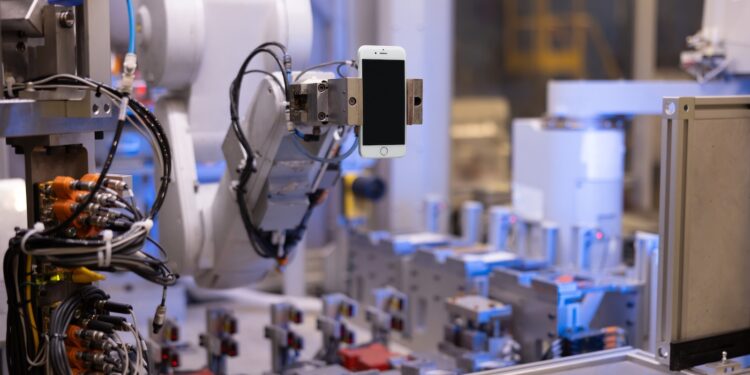In the modern world, sustainability is a key issue, and innovative technologies play a crucial role in implementing environmentally friendly solutions. A notable example is Apple's Daisy recycling robot. This robot is not only a technological masterpiece but also a significant contribution to reducing the ecological footprint. Below you will learn everything you need to know about the Daisy recycling robot, its impressive capabilities and its role in the fight against pollution.
Technology has made tremendous advances in the last few decades, and Apple is a leader when it comes to driving innovation. With the launch of the Daisy recycling robot, Apple once again demonstrated its commitment to sustainability and environmental protection. Daisy specializes in efficiently dismantling old iPhones and recovering valuable materials. But how exactly does this robot work, and what impact does it have on the recycling industry? Let's take a closer look.
The Evolution of Daisy
Apple has already made impressive progress with the recycling robot Liam, but Daisy is a further development that sets new standards in many ways. While Liam could dismantle an iPhone in 12 minutes, Daisy now only needs 4 seconds to do so. This huge increase in efficiency has been achieved through the use of brute force and cutting-edge technology.
How Daisy Works
Daisy’s recycling process takes place in four steps:
- First step: Identification – First, buckets of iPhones are thrown into a chute. Daisy places each one on a conveyor belt and uses machine learning to determine which model it is.
- Second step: display removal – The display is then peeled off and each device is exposed to temperatures of -80 degrees Celsius, causing the adhesive in the batteries to fail.
- Third step: Battery disconnection – Daisy will then eject the battery and the iPhone will move on to the next steps.
- Fourth step: part separation – Finally, the components land on a rotating surface where they are sorted by a human. The parts are then sent in boxes to e-waste companies.
environmental impacts
The Daisy recycling robot has a significant positive impact on the environment. One tonne of material recovered by Daisy prevents the mining of 2,000 tonnes of raw materials. This not only reduces the need for new raw materials but also helps reduce pollution and CO2 emissions.
challenges and future prospects
Despite its impressive capabilities, there are still challenges to overcome. While Daisy can recycle up to 1.2 million iPhones per year, that's only a fraction of the 150 million smartphones that are discarded annually. Apple has made its Daisy patents available for free, but so far no company has responded, as TechCrunch reportedSarah Chandler, Apple's vice president of environment and supply chain innovation, emphasizes the need to increase customer engagement. Through factory tours and education, Apple aims to further spread the message of sustainable recycling.
Daisy: A step towards a sustainable future
The Daisy recycling robot is a significant step towards a more sustainable future. With its ability to disassemble iPhones quickly and efficiently, it makes a significant contribution to reducing electronic waste. Although challenges still exist, Apple's commitment shows that technological innovations can make a major contribution to protecting the environment. By consciously choosing sustainable technologies and processes, we can collectively make a positive impact on our planet. (Image: Apple)
- Apple hearing study provides first insights into tinnitus
- Apple vs. EU: Billion dollar fine for Apple Music challenged
- Apple COO Jeff Williams in Taiwan for 2nm chip deal
- Foldable iPhone: Why you still have to wait





